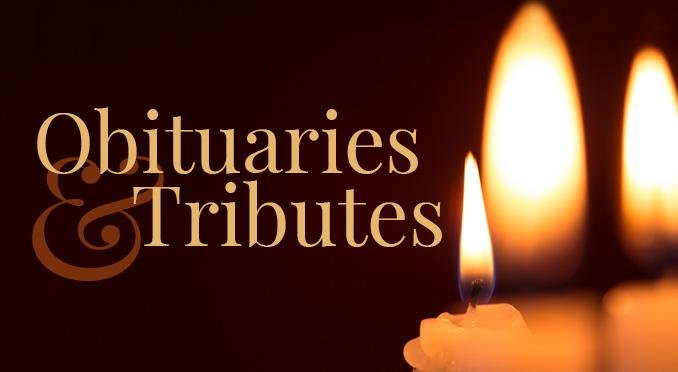Map & Directions
Contact Us
Cremation Services
At Carl R. Spear Funeral Home, we offer many options for those who prefer cremation as a means of final disposition. The only difference between a funeral service followed by burial and one followed by cremation is that the remains are taken to the crematory after the service instead of to the cemetery for burial. This means that families have the option to have visitations and funerals where the remains are present and still choose cremation as a means of disposition.
We offer a range of caskets suited specifically for visitations and funeral services followed by cremation. These are constructed of hardwood or other completely combustible material. For families that want the remains present for visitations or funeral services but do not wish to purchase a casket, we have a specially designed solid oak casket which has a self-contained removable interior. The casket shell is rented for the services and then the remains are removed in the self-contained interior and taken to the crematory. This option makes cremation with services a very economical alternative.
In addition we also offer cremation services with a memorial service, meaning that the remains are not present. This service may be held at a place of worship or any other appropriate location. Some families choose to have the cremated remains present at the memorial service while others do not.
Direct cremation is an option where the remains are cremated without any formal visitation, funeral or memorial services.
We offer a range of cremation urns for families to choose from. The cremation urn serves the same purpose as a casket in that it contains the cremated remains and serves as focal point for memorialization. Cremation urns range in both style and construction. They range in composition from solid hardwood, marble, bronze, porcelain, stainless steel and others. Styles range from traditional rectangular and vase shaped to contemporary pieces of art.
There are several options when considering a place of final disposition. One choice for the final resting place of cremated remains in an urn is a niche in a columbarium. Columbaria are generally located in a cemetery and may be a room or wall very similar to a mausoleum in which urns are placed. Some people prefer earth burial of the cremated remains. This option is very practical for those who already have a family cemetery plot or whose spouse or other family members do not wish to be cremated. Some cemeteries require the cremated remains to be buried in an urn vault, which we can provide. It is not required that the urn be interred by one of these options. The urn may be taken home. This is often only a temporary situation pending permanent placement of the remains. Also, guidelines exist for interment of cremated remains for some religious faiths.
While these descriptions cover the general types of cremation services and options, families are encouraged to pick and choose services that will create the most meaningful and expressive memorialization experience for their family.
Cremation FAQ
What is Cremation?
Cremation is the process of reducing the human body to bone fragments using high heat and flame. Cremation is not the final disposition of the remains, nor is it a type of funeral service.
Is a casket needed for Cremation?
No, a casket is not required, most states require an alternative container constructed of wood or cardboard, however, in some states no container is required.
Is embalming required prior to cremation?
No. In fact it is against the law for a funeral home to tell you otherwise.
Can the body be viewed without embalming?
Yes, most crematories allow immediate family members to briefly view the deceased prior to cremation.
Can the family witness the cremation?
Yes they can; some cremation providers will allow family members to be present when the body is placed in the cremation chamber. Some religious groups even include this as part of their funeral custom.
Can an urn be brought into church?
Nearly all Protestant Churches allow for the urn to be present during the memorial service. Most Catholic Churches also allow the remains to be present during the Memorial Mass. It is encouraged that cremated remains be a part of a funeral as it provides a focal point for the service.
What can be done with the cremated remains?
While laws vary state by state, for the most part remains can be buried in a cemetery lot or a cremation garden, interred in a columbarium, kept at home or scattered.
How can I be sure I receive the correct remains?
All reputable cremation providers have developed rigorous sets of operating policies and procedures in order to maximize the level of service and minimize the potential for human error. Since it is illegal to perform more than one cremation at a time, and the vast majority of crematories can only cremate one body at a time, it is next to impossible to receive the incorrect remains.
How long does the actual cremation take?
It all depends on the weight of the individual. For an average sized adult, cremation can take two to three hours at a normal operating temperature of between 1,000 and 2,000 degrees Fahrenheit.
What do the cremated remains look like?
Cremated remains resemble coarse sand and are whitish to light grey in color. The remains of an average sized adult usually weighs between 7 and 8 pounds.
Are all the cremated remains returned?
With the exception of minute and microscopic particles, which are impossible to remove from the cremation chamber and processing machine, all of the cremated remains are given back to the family.
Do I need an urn?
An urn is not required by law. However, an urn may be desired if there is to be a memorial service or if the remains are to be interred in a cemetery. If an urn is not purchased or provided by the family, the cremated remains will be returned in a temporary plastic container.
Leave a condolence, share a memory, post a photo, light a candle and more with our beautifully designed interactive online tributes.
Our local florists are committed to offering only the finest floral arrangements backed by their professionalism and prompt service.
Looking for something you can't find? We make it easy to get the answers you need. Ask the Director a question anytime.



